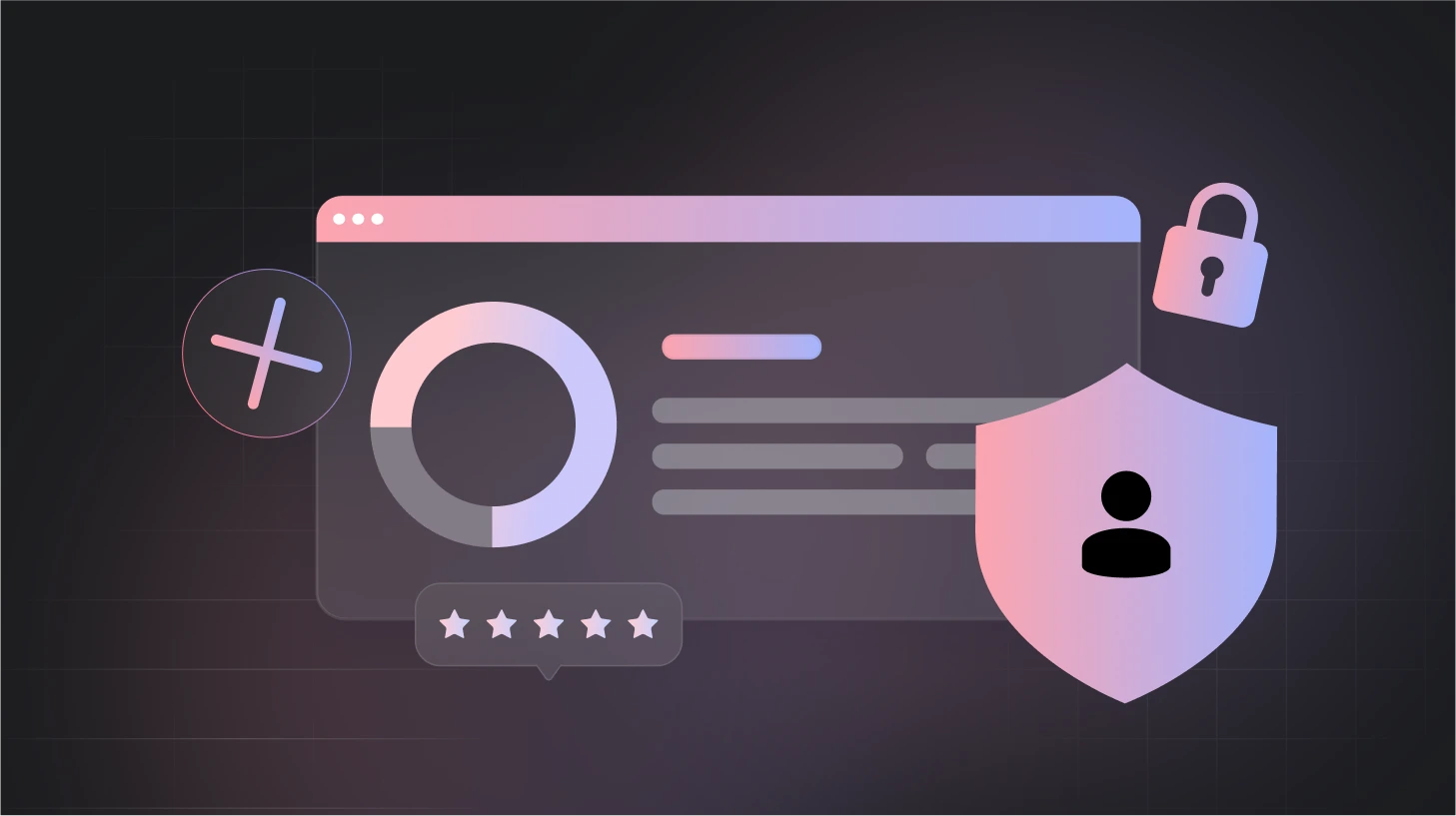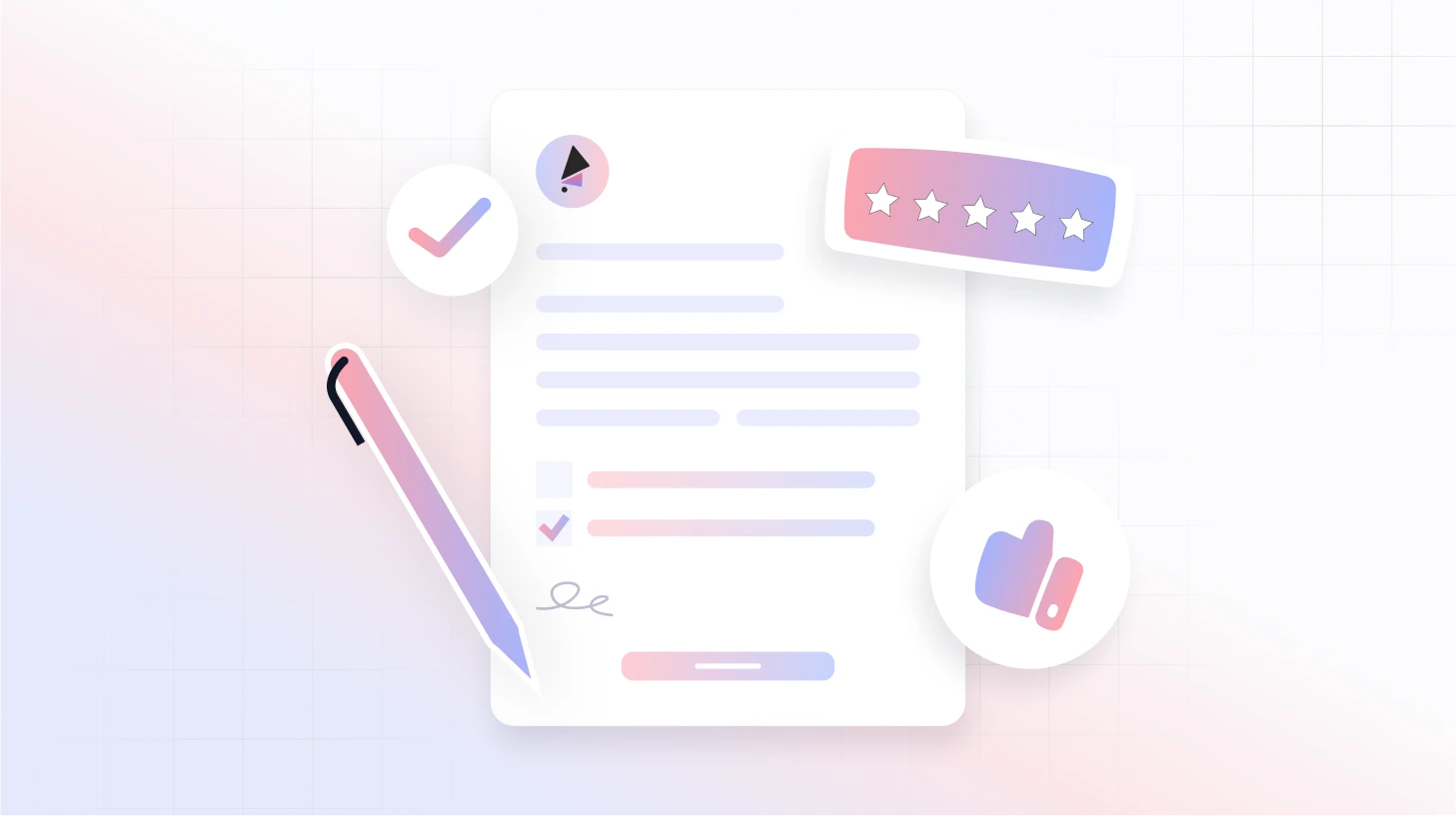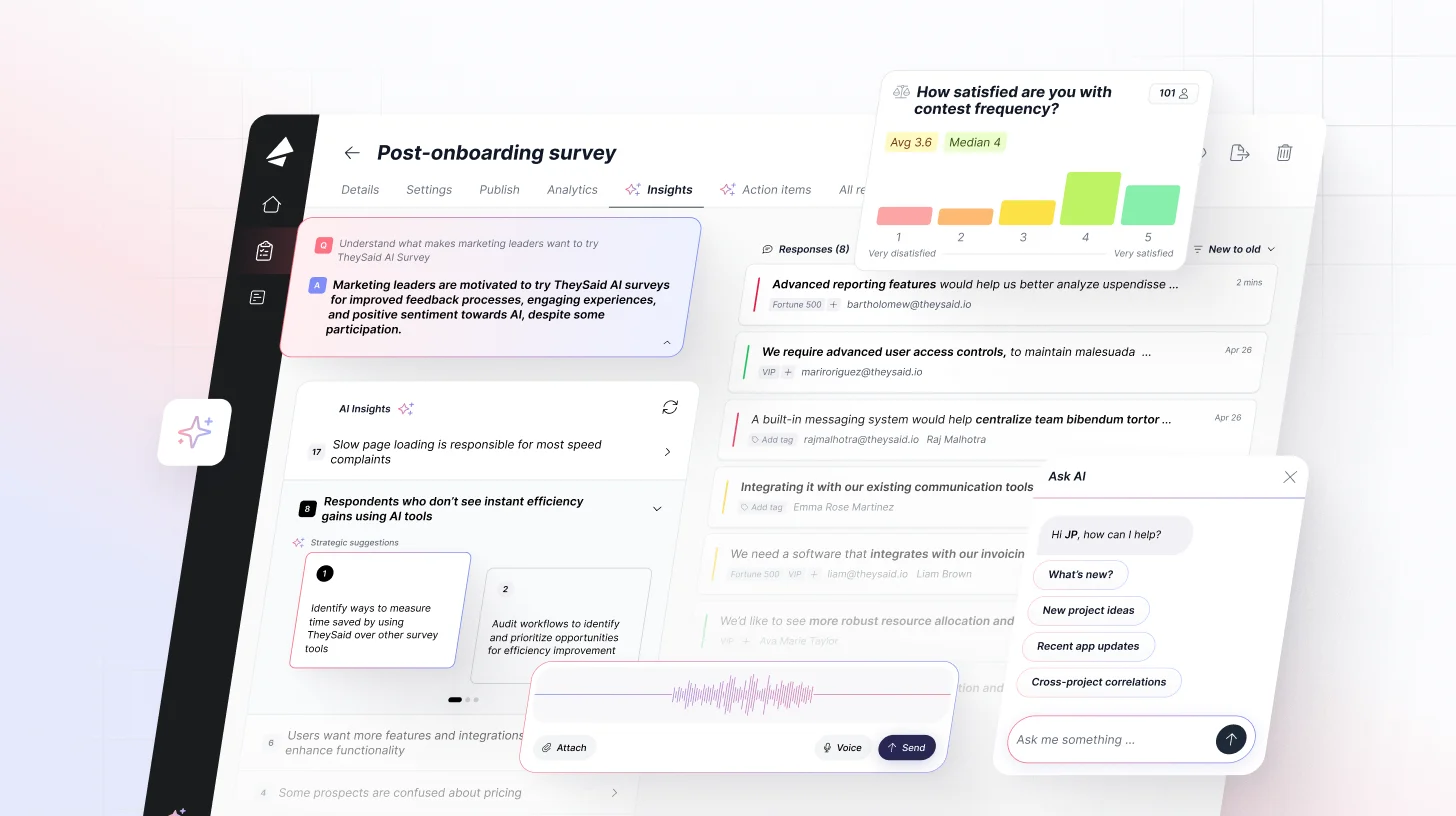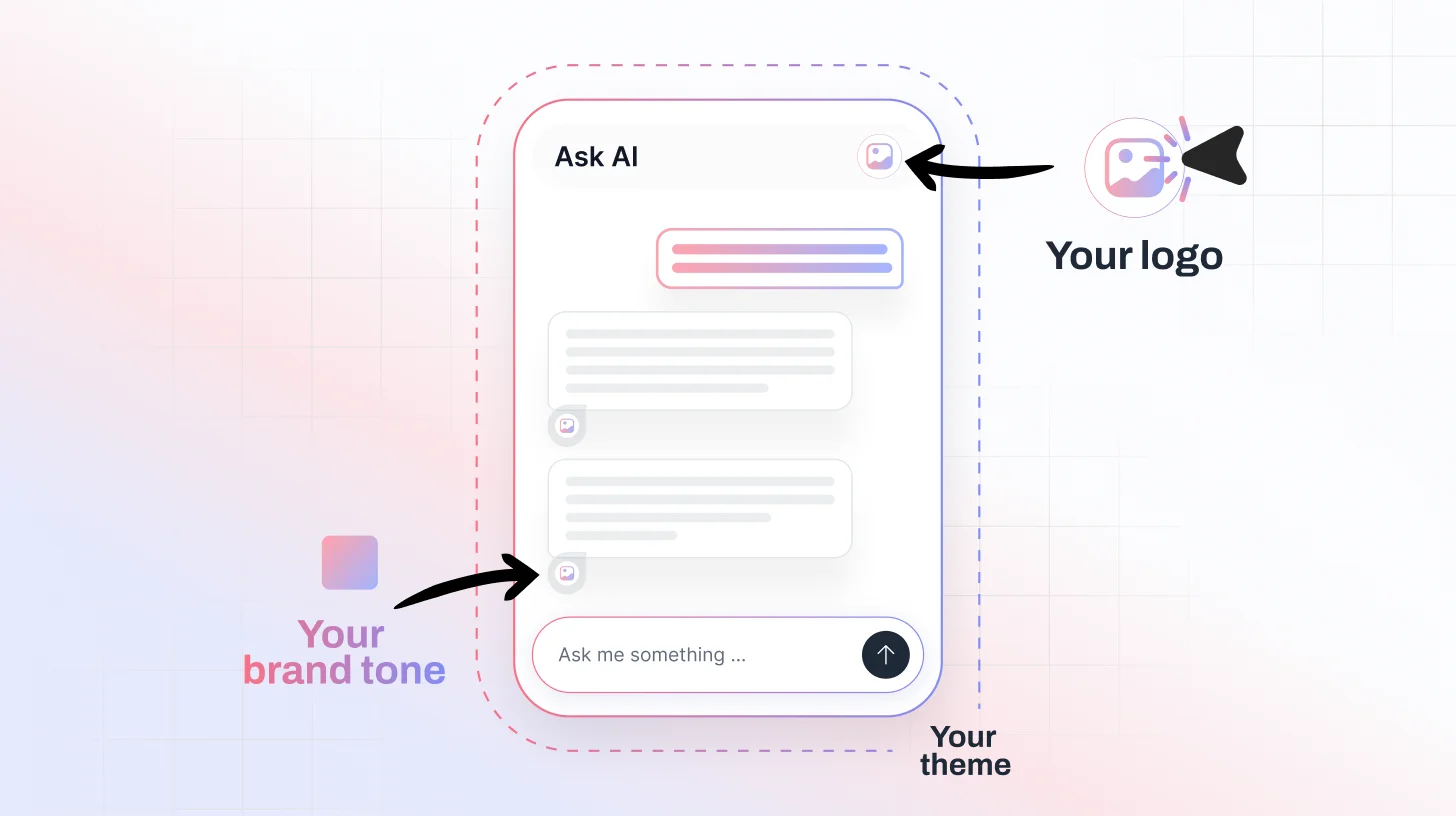 Blog
Blog Privacy Statement for Surveys: Building Trust Through Transparency
Privacy Statement for Surveys: Building Trust Through TransparencyPrivacy Statement for Surveys: Building Trust Through Transparency

Your survey just landed in someone's inbox. They see the subject line, open the email, and start reading your questions. Then they pause. "What happens to my answers? Who sees this data?"
That pause costs you responses. Lost responses mean incomplete data. Incomplete data leads to bad decisions.
Smart product leaders solve this with one simple addition: a privacy statement for surveys that actually works.
The Hidden Cost of Missing Privacy Statements
Research reveals a clear pattern. Americans are increasingly concerned about data privacy, with 71% worried about government data use and 67% saying they understand little about what companies do with their personal data. Your respondents want transparency before they share their thoughts.
B2B buyers especially demand this clarity. When you're surveying enterprise customers about their pain points, security concerns, or budget allocations, they need confidence their sensitive information stays protected.
TheySaid's research across 50,000+ surveys reveals a pattern. Companies that skip privacy statements lose qualified responses from decision-makers. CFOs don't complete budget surveys without knowing data handling practices. IT directors won't share security challenges unless they understand who sees their answers.
What Makes a Privacy Statement for Surveys Actually Work
Your privacy statement needs to answer five critical questions before respondents start typing:
Critical Elements Every Survey Privacy Statement Needs
Data Collection Scope
Start with what you actually collect. Many surveys gather more data than organizers realize. Your survey platform might capture IP addresses, completion times, or device types automatically.
List everything:
- Direct responses to your questions
- Contact information (if collected)
- Technical data (IP addresses, timestamps)
- Demographic information
- Follow-up preferences

Purpose and Use Cases
Connect each data type to specific business needs. Avoid generic phrases like "business purposes" or "service improvement."
Instead, write: "We use email addresses to send personalized benchmark reports comparing your responses to industry averages."
Third-Party Sharing
Name your technology stack. Respondents deserve to know if their answers flow through:
- Survey platforms (TheySaid, Typeform, etc.)
- Analytics tools (Google Analytics, Mixpanel)
- CRM systems (Salesforce, HubSpot)
- Data processors or research partners
Data Protection Measures
Security conscious respondents want technical details. Mention:
- Encryption standards (SSL/TLS)
- Access controls (role-based permissions)
- Data storage locations (cloud providers, geographic regions)
- Backup and retention policies
Respondent Rights
Different regulations grant different rights. Cover the basics that apply globally:
- Right to access their responses
- Right to correct inaccurate information
- Right to delete their data
- Right to withdraw from follow-up communications
Include contact information for exercising these rights. A dedicated email address works better than generic support channels.
Where to Place Your Privacy Statement for Surveys
Survey Introduction
Place your full privacy statement at the beginning. Use clear headers and bullet points for scannability. Most respondents skim this section, so make key points stand out visually.
Email Invitations
Include a condensed version in your survey invitation. Cover the most important points: what you're collecting, why you need it, and who to contact with questions.
Link to your full privacy policy for complete details.
Consent Checkboxes
Add an active consent mechanism. "I understand and agree to the data practices described in the privacy statement," with a required checkbox, creates clear documentation of consent.
This approach works especially well for sensitive surveys or when collecting personally identifiable information.
Legal Requirements You Can't Ignore
Privacy laws vary by location, but certain requirements appear across jurisdictions.
GDPR Compliance
If you survey anyone in the European Union, GDPR applies. Key requirements include:
- Lawful basis for processing (consent, legitimate interest, etc.)
- Clear information about data processing
- Easy ways to withdraw consent
- Data minimization (collect only what you need)
CCPA and State Laws
California's privacy law covers businesses meeting certain thresholds. Other states are following with similar regulations. Common requirements include:
- Notice of data collection at or before collection
- Information about data selling or sharing
- Consumer rights to know, delete, and correct
Check your specific legal obligations based on your business location and where you survey respondents. When in doubt, consult privacy law experts who understand current regulations.
Common Mistakes That Kill Response Rates
- Generic legal language. Copying privacy policies from other companies creates confusion. Write in plain language your actual respondents understand.
- Hidden important details. Burying key information in dense paragraphs reduces trust. Use headers, bullets, and white space to highlight crucial points.
- Inconsistent promises. Your privacy statement should match your actual data practices. Saying you don't share data while your terms of service allows sharing creates legal and trust issues.
- No clear contact method. Respondents need easy ways to ask questions or report concerns. A working email address beats a generic contact form.
- Outdated information. Review and update privacy statements regularly. Changes in your survey platform, data processors, or business practices require updates.
Building Trust Through Clear Communication
Your privacy statement represents your company's commitment to data stewardship. Well-written statements do more than meet legal requirements - they demonstrate respect for respondent privacy.
Smart SaaS leaders use privacy statements as a competitive advantage. When prospects see transparent data practices, they're more likely to engage with future surveys and research requests.
This trust compounds over time. Respondents who feel confident about your data handling become advocates for your research. They refer colleagues, participate in follow-up studies, and provide more detailed feedback.
Advanced Privacy Statement Strategies
Tiered Disclosure
Present privacy information in layers. Start with the essential details most respondents need. Provide links to more comprehensive information for those who want complete details.
Example structure:
- One-sentence summary in survey invitation
- Key points in survey introduction
- Full privacy policy linked for complete information
Dynamic Content
Customize privacy statements based on survey content. B2B surveys about cybersecurity need different privacy assurances than customer satisfaction surveys.
Adjust your language and emphasis based on:
- Survey topic sensitivity
- Respondent role (executive vs. individual contributor)
- Data collection scope (anonymous vs. identified)
Regular Updates
Set calendar reminders to review privacy statements quarterly. Changes in your business, technology stack, or legal requirements all trigger needed updates.
Document changes and notify previous respondents when materially different practices take effect.
Measuring Privacy Statement Effectiveness
Track key metrics to understand how privacy statements affect your survey performance:
- Completion rates by survey type. Compare surveys with different privacy statement approaches to identify what works best for your audience.
- Drop-off points. Monitor where respondents abandon surveys. High abandonment after the privacy statement indicates messaging problems.
- Contact volume. More privacy-related questions might signal unclear statements or growing privacy awareness among your audience.
- Follow-up participation. Respondents who trust your privacy practices are more likely to participate in future research.

How Leading Survey Platforms Handle Privacy
Modern survey platforms recognize privacy as a competitive advantage. TheySaid implement comprehensive privacy frameworks that protect user data while maintaining survey functionality.
Look for platforms that offer:
- Automatic data encryption during transmission and storage
- Granular access controls for survey administrators
- Built-in compliance tools for GDPR, CCPA, and other regulations
- Clear data retention policies with automated deletion
- Transparent third-party integrations
Top companies audit their survey platform's privacy practices regularly. Your privacy statement for surveys should accurately reflect your platform's actual data handling procedures.
Key Takeaways
- Privacy statements for surveys increase completion rates by up to 23% among enterprise respondents
- Include five essential elements: who, what, why, where, and how long for data collection
- Place privacy information in survey introductions, email invitations, and consent checkboxes
- GDPR and CCPA requirements apply to most business surveys regardless of your company's location
- Regular updates and plain language communication build lasting respondent trust
Your privacy statement for surveys represents more than legal compliance. It's your first opportunity to build trust with respondents and demonstrate your commitment to responsible data practices.
Companies that invest in clear, comprehensive privacy statements see higher response rates, better data quality, and stronger relationships with their survey audiences. These benefits compound as privacy awareness grows and regulations expand.
Effective privacy communication starts with understanding what your respondents actually care about. Focus on clarity, specificity, and respect for data subjects' rights. When you get privacy statements right, everything else about your survey program improves.
Frequently Asked Questions
What information must be included in a privacy statement for surveys?
A comprehensive privacy statement for surveys should detail what data you collect (responses, contact info, technical data), why you need it (analysis, follow-up, benchmarking), how long you keep it, who has access, and how respondents can exercise their rights. Include your contact information and any third-party processors involved. The statement should match your actual data practices exactly.
Do anonymous surveys need privacy statements?
Yes, even anonymous surveys often require privacy statements because they typically collect some form of data beyond just responses. Most survey platforms automatically capture IP addresses, timestamps, device information, and completion patterns. If you're using cookies, analytics tools, or any tracking mechanisms, you're collecting personal data that requires disclosure under privacy laws.
Where should I place the privacy statement in my survey?
Best practice involves multiple touchpoints: include key points in your email invitation, place the full statement at the survey introduction, and add consent checkboxes for sensitive data collection. Link to your complete privacy policy for comprehensive details. This layered approach ensures respondents see privacy information when they need it most.
How often should survey privacy statements be updated?
Review your privacy statement for surveys quarterly and update it immediately when you change survey platforms, add new data processors, modify retention policies, or face new legal requirements. Document all changes and notify previous respondents when material practices change. Set calendar reminders to prevent outdated statements that create compliance risks.
What happens if respondents don't agree to the privacy statement?
Respondents who decline privacy terms cannot participate in your survey. Build this logic into your survey design with required consent checkboxes that disqualify non-consenting participants. This protects your legal position and ensures all collected data comes from properly consented sources. Consider offering alternative participation methods for privacy-concerned respondents when possible.
















.svg)